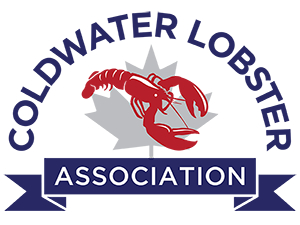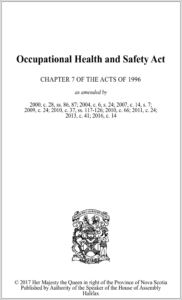Operational Safety Binders
Free to our Members
Coldwater Lobster Association (CLA) is committed to a culture that values health and safety. Through leadership and training, we create a safe and healthy work environment where risk is managed and assist harvesters by working together. CLA’s safety sub-committee worked with industry leaders to develop comprehensive operational binders that are up-to-date, user-friendly and free to all of our members. These binders were created with fishermen in mind and are intended to help our members comply with requirements under Provincial and Federal Government regulations. In 2017, Transport Canada updated their fishing vessel regulations which included more extensive life saving equipment requirements, safety training, familiarization, emergency drills and reporting. CLA modifies our operational safety binders to suit each vessel and company based on hull length.
COVID-19: Understanding Risk of COVID-19 to Fish Harvesters
The Fisheries Sector Council of Nova Scotia in collaboration with the Nova Scotia Department of Labour and Advanced Education – Occupational Health and Safety Division and Nova Scotia Public Health developed a guide to help support the fishing industry and to establish guidelines to prevent the spread of Covid-19. This comprehensive document can be found HERE.
Safety Courses
Upcoming courses & safety training for fishermen.
Safety and training courses will be listed here as they become available. If member interest for a particular course is significant, Coldwater Lobster Association will inquire with the training registration personnel regarding potential group discounts.
Marine First Aid – BASIC – St. John Ambulance
When:
Yarmouth:
Digby:
Marine Emergency Duties (MED DVS)
When: July 18 – July 21 |
Time: 8:30AM – […]
Marine First Aid – ADVANCED – St. John Ambulance
When: June 5 – 9 | July 10 – 14
Time: […]
NS Occupational Health & Safety
Vessel Regulations
Download checklists as a quick reference guide – based on information contained in the Fishing Vessel Safety Regulations which came into force July 13, 2017.
FISHING VESSEL SAFETY REGULATION – 15m
DOWNLOAD A COPY
FISHING VESSEL SAFETY REGULATION – 12m – 15m-1
DOWNLOAD A COPY
FISHING VESSEL SAFETY REGULATION – 9m – 12m
DOWNLOAD A COPY
FISHING VESSEL SAFETY REGULATION – 6m – 9m
DOWNLOAD A COPY
Why does a lobster turn red when cooked? The red pigment is the most stable component of the coloring in a lobster shell. The greens and browns which darken the shell in a live lobster are destroyed by cooking.
I’ve heard that lobsters molt, but I’ve never seen a cast-off shell. Why? After molting, lobsters eat voraciously, often devouring their own recently vacated shells. This replenishment of lost calcium hastens the hardening of the new shell, which takes about 14-30 days from the actual loss of the old shell.
What do lobsters eat? Lobsters usually move around and hunt for food at night. It was once thought that lobsters were scavengers and ate primarily dead things. However, researchers have discovered that lobsters catch mainly fresh food (except for bait), which includes fish, crabs, mussels, sea urchins, and sometimes even other lobsters!





